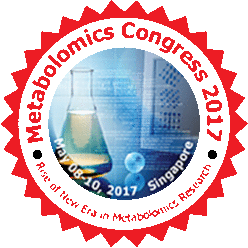Maximilian Zucker
Numares HEALTH AG, Germany
Title: From bench to bedside: Developing clinical routine diagnostics using NMR facilitated metabolomics
Biography
Biography: Maximilian Zucker
Abstract
Statement of the Problem: In recent years, metabolomics has become a powerful tool for discovering biomarkers for diagnostic purposes. Although numerous promising biomarker patterns have been reported for a broad range of disorders, only few have entered clinical routine. Our presentation aims at analyzing this paradox.
Theory & Practice: The detection of disease-specific biomarker patterns and their transfer from theory into clinical practice as diagnostic tools requires robust, accurate, reproducible and cost/time-efficient methods. Thus, numares has developed the AXINON System encompassing the Magnetic Group Signaling (MGS) technology allowing quantitative analyses of metabolites in body fluids by nuclear magnetic resonance (NMR) spectroscopy. This standardized NMR-analysis is combined with internal quality control algorithms and innovative biostatistics.
Clinical Application: By meeting all these above requirements, we present the in vitro discovery, implementation and validation of novel biomarkers in the fields of urological malignancies, atherosclerosis and kidney disease as application examples. The general workflow included NMR analysis of several hundred patient samples in three distinct cohorts per use-case. Spectra of a first use-case specific cohort (training sets) were evaluated to identify spectral regions discriminating patients from controls. Subsequently, metabolites within these regions were identified, validated and quantified by fitting algorithms. In order to increase diagnostic sensitivity and specificity, single marker candidates were combined into multi-marker patterns, which were selected by using the second cohorts (optimization cohort). The final patterns were validated in the third independent test cohorts.
Conclusion & Significance: In order to implement metabolomics-based diagnostic test into clinical routine, several technical and algorithmic hurdles have to be tackled. It will only be possible to overcome the above mentioned paradox if new skills and technologies are added to what is otherwise required in more classical diagnostic approaches.

